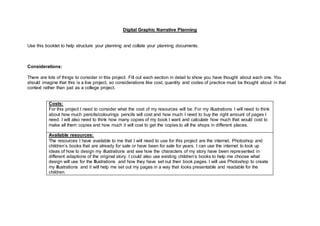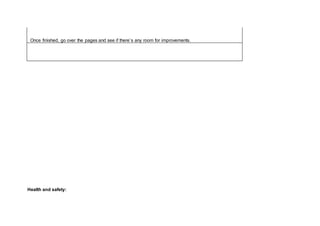The document provides planning details for a digital graphic narrative project. It includes considerations for costs, available resources, quantity, audience, quality factors, codes of practice, regulation, copyright, ethical issues, and health and safety. A production schedule is outlined in sessions that include creating characters, scenery, and pages for the narrative. Risks such as long periods sitting, trip hazards, spills near electronics, and hazardous substances are identified and prevention methods referenced appropriate legislation.











